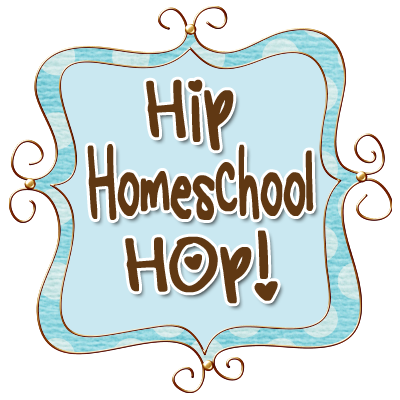Science kits seem to pop-up just about everywhere these days-- toy stores, book stores, and even the local hardware store. Robots, bubbles, volcanoes, perfume, slime, solar power, gum. There doesn't seem to be any aspect of science study that hasn't been turned into a kit. The varied topics found in these science kits can turn your science studies into an unique personalized course. The following steps will enable you to put together a science course just right for your family.
The latest kit we've picked
will allow us to build a wind turbine to preform experiments with.
A library of resource books is a must. The Kingfisher Science Encyclopedia and the Usborne Internet-Linked Science Encyclopedias are my go to books. I also consider our library a source for more specific information.
images courtesy of books.google.com
Sometimes manuals provide a bit of background or scientific information, but usually I've found them to be pretty bare-bones,thus the need for additional information to make a kit into a complete course.
Looking through this booklet I see that the concepts of work, energy, wind, aerodynamics, wind power, and windmills are covered throughout the different experiments.
Then decide where, how, and when your students will research these concepts. Matching up the above concepts with the entries in my Kingfisher Science Encyclopedia and Usborne Internet-Linked Encyclopedias, I start to see how learning the concepts will take place. The wind entry in the Kingfisher Science Encyclopedia will lend itself to summarizing, so I mark down our first assignment as reading the entry and writing a paragraph summarizing the information. While looking through the Usborne Internet-Linked Encyclopedia, I come across a beautiful chart explaining the Beaufort Scale of Wind Forces with a list of observable effects to measure wind force, so I include the assignment to reproduce that chart in their science notebooks, and then to make a chart to observe wind force each day through out our study of wind power. Further more I find a website from the Usborne Encyclopedia which includes lots of online activities about what causes different types of weather. Looking up the other concepts, I see that some of the information may be good to memorize while other entries would work for further independent research.
One of the concepts, windmills, is not covered in either encyclopedia, so I head to the library to find some books on windmills. After searching through lots of how-to-books, I found The Wind at Work, an activity guide about windmills as well as a book chock full of pictures and history about windmills. I also came across this gem : The Boy Who Harnessed the Wind. I hadn't planned on including a novel in our science studies, but this true story about a boy who makes a windmill out of junk in order to bring food and hope to his African village was just too good to pass up. I feel my children will benefit from several different character traits shown in this story which is one of the reasons I love being able to put together studies that are individualized for my family.
Next match up the assignments with the experiments in the kit. The wind entry will of course match up with the two experiments on wind. I like to complete our research and reading before completing the experiments as I find it helps my kids to better understand what is happening during the experiment.
Complete the experiments. The best part of any science course is the experiments! I have my kids complete lab sheets with all experiments. I find it helps them process what is going on in the experiment, and we have something concrete to look back on and discuss after the actual experiment has been dismantled. Donna Young has several different lab sheets available for free.
Individualize the course for your family. Science is an opportunity to explore and analyze the world while really making learning fun. There are science kits available for kindergartners through adults. Don't wait until your children are older to start science and don't avoid using the kits yourself because you aren't young. Use young children's natural wonder to jump start their love of learning. Assignments for younger kids may be as simple as a picture drawn to show what was learned. That's okay. The books and assignments I've mentioned here work for my middle school aged children; others may work better for you family. If science is incorporated throughout their growing up years, investigating, probing, questioning, scrutinizing, and digging to learn more about our world will become second nature to your children.
Be sure to check out what all the other Hip Homeschool Moms are doing at the



Nice to meet you Miss Moe-- it looks like you have a wealth of good information and resources here! Now following!
ReplyDeleteGreat post! Lots of links and you made it sound so easy! Thanks for the ideas. I usually have trouble staying focused on the core concepts when planning, there is just so many interesting things to learn about!
ReplyDeleteI looked on your side bar and noticed history portfolios and was wondering if you used them a lot? Is Story of the World your core?
Looks great! I have a few kits in mind for dd -- always wonder if they are worth it or not. Thanks for this post! :) Visiting from Science Sunday.
ReplyDeleteWe are using History Portfolios as our Core this year. We follow the suggestions in the Teacher's Guide. SOTW is being used as an overview since my kids are a bit older.
ReplyDeleteAlso, I've done a review for the History Portfolios, if you'd like to check it out.
ReplyDeletehttp://missmoe-thesearethedaysofmylife.blogspot.com/2011/07/history-portfolio-review.html
Great post with great information.
ReplyDeleteLots of handy info! Thanks!!
ReplyDeleteFantastic post, thanks so much! That's what we will be doing this year :-)
ReplyDeleteI love this post! We use the Thames and Kosmos kits in a very similar way.
ReplyDelete